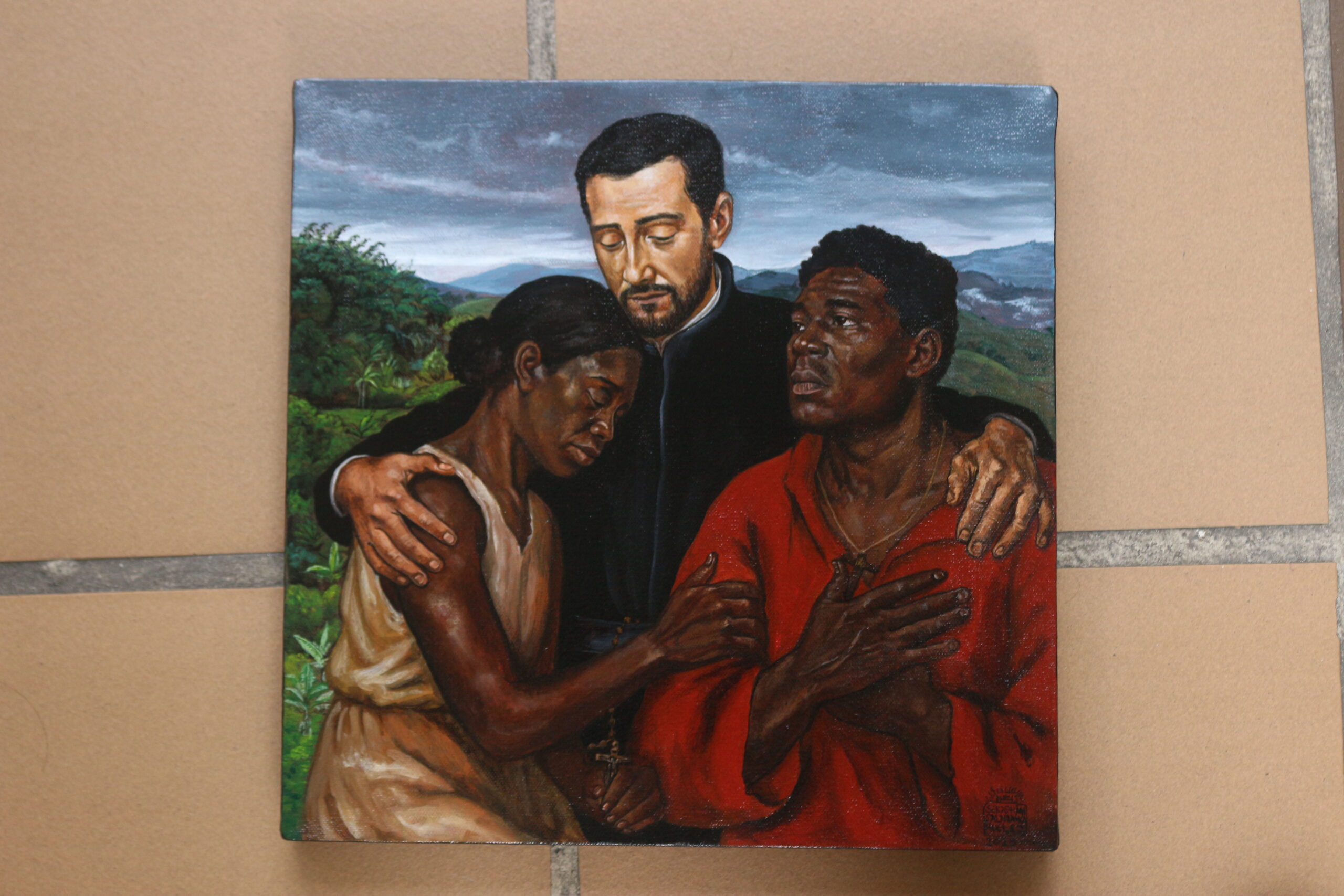My story with St. Peter Claver goes back to the novitiate, where I first learned about his life and his care for the enslaved people who arrived from the African continent. What moved me the most was his unconditional dedication to those who arrived disoriented and half-dead. He felt called to view himself as a servant of those most marginalized in his society.
Claver has shaped my Jesuit vocation in a very particular way. Along my journey, I have glimpsed the colors of the brushstrokes God has painted in my life, especially in the gift of being with the Rarámuri or Tarahumara people. As I was first discerning my Jesuit vocation serving in these communities in the mountains of north-central Mexico, I felt that God placed me there to encounter the poor and humble Jesus, who invited me to follow Him. In my 30-day silent Spiritual Exercises retreat, I experienced meeting Jesus in the Sierra Tarahumara. Later, in my Jesuit formation, I would return three more times: in 2019, to walk with young people; in 2021, in discernment for regency in the parish of San Francisco Javier in Cerocahui, alongside Fr. Javier Campos and Fr. Joaquín Mora, who were murdered the following year; and finally, for my regency first in Cerocahui Parish and later in Wawachiki Parish.
It was during an eight-day retreat in 2024 that God revealed a desire we both have been nurturing together, one that has only since continued to grow. In one of my prayers, when I asked myself, “What must I do or suffer for Christ?”, a clarity came that I did not expect—like that gentle breeze Elijah once felt. The One who called me granted me the desire to become “Tarahumarum semper servus”—a servant of the Rarámuri.
Like Claver, I feel the call to serve those at the margins today. This desire has been engraved in my heart and accompanies me in my theology studies here in Bogotá. I constantly dream that I am back in the Sierra Tarahumara, and when I wake from those dreams, I feel encouraged and joyful—they give me strength and courage to continue this stage of the journey.
Encouraged by a local Jesuit, I transformed such dreams into art. He encouraged me to use a painting as a potential model for a reimagining of the ministry of St. Peter Claver. In that piece, Peter is in the center, standing upright, pointing with his left hand to the crucifix he holds in his right. The saint appears to be teaching the way to two figures below him, their features indistinct—mere blotches of color. Based on that painting, I created a version that imitates the same style but gives more personality to those figures. This first painting is titled “Petrus Claver, aethiopum semper servus” (“Peter Claver, servant of the Africans forever”), the formula Claver himself used to sign his final vows. It is an oil painting on canvas.

But I was not at peace. I remember sharing the painting with an Apostoline sister from the Dominican Republic who is herself an Afro-Latina. She advised me to create a different version of Peter Claver. I followed her counsel and made a second painting, with nearly the same composition, except this time giving the enslaved people arriving from Africa more personality and strength, portraying them meeting Peter in an almost maternal embrace. I titled this painting “Mercy and Tenderness” and painted it in acrylic on canvas.

Finishing the second painting was a challenge, since with oil it was easier to capture skin tones more accurately. It also meant something important for me: making room to integrate into my Jesuit vocation my vocation as an artist. I thought I had already accepted this, but I have gone through moments where I realized I had not fully embraced this part of myself. I do not consider myself an artist in the conventional sense. Before joining the Society, I felt out of place in the so-called “artistic” environment.
My way of being an artist is different. I feel like an artist when I share what I know and love freely and generously. I am passionate about sacred art, though that has sometimes brought misunderstandings or ridicule. I tend to shy away from exhibitions. I have no social media by personal choice, but I enjoy sharing my work within my community and with my fellow Jesuits. But I see this step as part of my incorporation into the Society. I am a Jesuit, and I am an artist. That is an essential part of my vocation—God made me this way in order to use me, with my gifts and my flaws, my fears and my strengths.
In this first year of theology in Colombia, Peter Claver has helped me love the people here just as I have loved the people of the Tarahumara. And yet, the desire to return beats deeply within me. Peter Claver has taught me that love has no conditions, but it does have choices—even if those choices bring questions and fear. My choice is to love as a Jesuit and as an artist, with all its light and shadow, its nuances and colors, for it is these that give shape to what is captured by the brush upon the canvas of my life in this least Society of Jesus.
Images courtesy of artist and author
